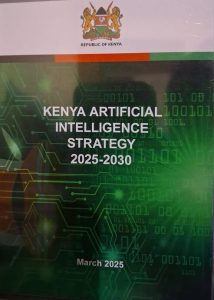By John Walubengo
Is Gen Z’s movement leaderless like the internet or blockchain? We explore decentralized systems and how they function without a central authority, raising questions about the structure of the Gen Z movement.
We are now several weeks into the GenZ movement or revolution and the debate around whether they are indeed leaderless or have some leader – possibly foreign-based- continues to abound.
Of course, I do not possess the state machinery to answer that question one way or the other. However, I do know that several systems in the real world are leaderless but work in synchronized, collaboration to achieve a certain objective.
In other words, it is indeed possible to have an effective, efficient, agile but leaderless system and we take a look at some of such systems in the digital domain.
The Internet
Most of us wake up and get online every morning but never care to understand how the internet is structured. The Internet is one of those effective, efficient , agile but technically leaderless system.
Yes, there is an organization called ICANN that oversees the different components of the Internet, but they largely offer a platform for the different components to compare notes and synchronize their independent, decentralized operations.
For example, the organizations that oversee issuing unique numbers that each device requires to connect to the internet – the IP Addresses – are quite different and separate from the organizations that are in charge of the internet names – the domain name system.
The organizations that oversee IP addresses, known as Regional Internet Registries (RIR) and those in charge of the internet domain name system, known as the generic top-level domain registries (gTLDs) or country code top-level domains (ccTLDs) work independently at an organizational level – but are tightly integrated at a technical level through software mechanisms.
Further, each of these two sampled internet organizations, the RIR and the gTLDs have extensive, multistakeholder, bottom-up governance structures that are open to membership at global, regional and country levels. Any internet user can sign up on a mailing list and participate in policy creation related to how they wish to have that element of the internet should be governed.
Essentially, the Internet is governed or led by a loose amalgamation of decentralized communities of interests -each further broken down into a membership that is very open, easy to join, easy to leave and easy to contribute to.
The Blockchain System
Another decentralized formation without any specified, centralized leadership can be seen from Blockchain systems as described by, Satoshi, the creator or creators of the Bitcoin system whose technical specification is captured in the seminal paper titled ‘Peer to Peer Electronic Cashless System’.
A blockchain system takes the decentralized nature of the Internet to its highest and purest levels. It entails three key building blocks – the nodes or computers, the software or protocols they run and the users – each acting independently of the other while still being glued together with an economic motive.
The entry into and exit from the Bitcoin ecosystem is free and open to pretty much anyone with a laptop who can choose to download the open and freely available software to start a process called ‘Bitcoin mining’ that makes the laptop into a Bitcoin Node.
The Node is incentivized to stay up and running by occasionally being rewarded with bitcoins – if and when they become the first computer to validate user transactions that are being exchanged globally – as guided by the agreed community standard bitcoin protocols.
There are over ten thousand independently run Bitcoin nodes across the globe, with many joining and many leaving the network, without affecting the stability of the system for over the last fifteen years that the Bitcoin project has been alive and kicking.
There is no single point of failure (or leader) within the Bitcoin system that one can ‘take out’ by way of coercion, bribing or neutralizing to bring down the project. This is because the system was by design, built from the ground up to survive anticipated attacks at the people, technical, economic and other layers.
Is the GenZ movement designed like the Internet or the Blockchain System? Time will tell.
John Walubengo is an ICT Lecturer and Consultant. @jwalu.
Photo Frank Omondi
![]()




